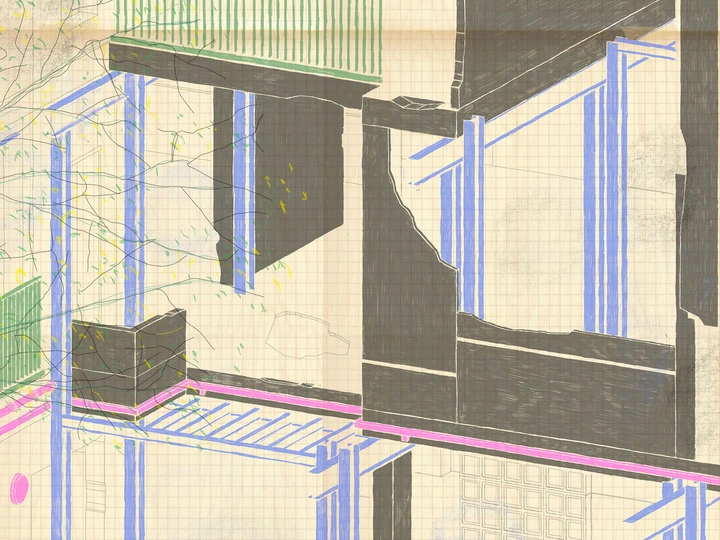Repairing Robin Hood Gardens

I am a young French architect deeply committed to a practice that listens attentively to places, histories, and the social and ecological realities that shape them. My path into architecture was shaped by this transversality—at the crossroads of these questions—convinced that the built project is, above all, a narrative: a gesture of attentive listening to place and its memories.
My final project at the Lille School of Architecture, focused on the repair of Robin Hood Gardens in London, marked a turning point in my approach. Rather than erase or idealize, I sought to question the existing with precision and care, revealing its fractures and latent potentials. For me, architecture is a political and ethical act—one that honors the past while embracing the necessity of transformation.
Though still early in my career, I have worked in offices across Ghent, Dublin, Lille, and now Brussels. Theses experiences confirmed that to draw is to think, critique, and invent. I favour a practice where drawing and models remain central to design—tools that grasp nuances, invisible tensions, and allow for a real dialogue with the existing.
I also work as a teaching assistant for third-year students at Lille. I see transmission as a fundamental responsibility. Sharing, questioning, and inspiring curiosity are essential to build a future where architecture is thoughtful, inclusive, and transformative.
Alongside practice, I continue critical research on post-war architecture, extending reflections begun in my master’s thesis. Through writing, analysis, and graphic exploration, I seek to deepen architecture’s capacity to hold memory and address our collective futures.
Architecture, to me, is a continuous act of engagement—an open, critical dialogue demanding humility, responsibility, and imagination to help shape a more just and sustainable world.
The project proposes repair as an act of radical resistance. Against standardised and dehumanising models, it makes a plea for an engaged way of intervening in the existing.
Robin Hood Gardens serves as a case study in order to explore the potential of post-war housing. Our intervention goes beyond a simple rehabilitation. It aims to give buildings the opportunity to evolve over time, while respecting its values. We believe in an architecture that considers history as a living material, placing users at the center and encouraging appropriation.
In London, the crisis of student housing is worrying. Privatization of the sector has led to a 67% rise in rents, forcing 1/5th of students to live in unhealthy and over-occupied conditions. This project proposes to rethink student housing through the very act of repair. It is guided by two key principles - adaptability and appropriation - and inspired by two references: the approach of John Habraken towards flexible housing and the work of Simone and Lucien Kroll in relation to experimentation.
Robin Hood Gardens is repaired without masking the traces of its time. A secondary steel structure supports the weaknesses of the primary structure. Each scar remains visible. Each intervention becomes identifiable. Repairing is revealing. But the project also faces the future and thinks long term. The steel structure creates flexible spaces, in which students can shape their own environments. Accommodations are modular and reconfigurable, turning individual modules into a collective space when needed. This system offers an infinite variety of uses exploring new forms of collectivity. In renewing the very typology of student housing, this project asks one simple question : how to repair the world together?